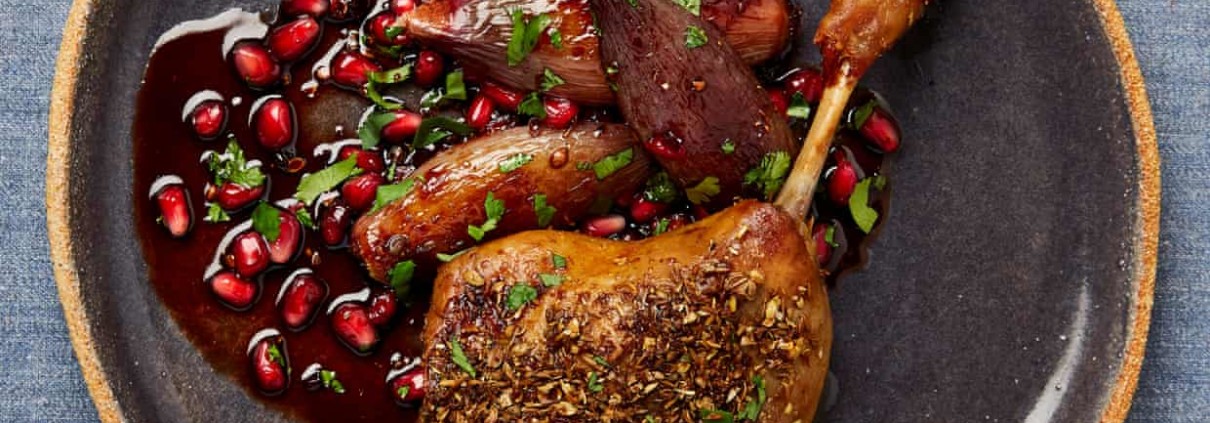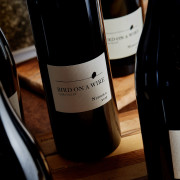For the Love of Duck
Duck for me is a delicacy. The sweet, gamey, textured, pink meat and its amazing versatility makes it hard for me to ever ignore duck when it is presented to me on a menu.
It’s not something I cook regularly at home and maybe that’s why I find it so enticing; it has a rare quality about it.
But the other key attraction is its ability to create the most delicious of all wine and food combinations. With a glass of pinot noir, it is, and always will be the perfect marriage.
You may think I’m exaggerating, because as you know, there are many styles of pinot noir and not all duck dishes are the same.
Yet this is where the fun and mystery begins.
A traditional duck confit is best matched to an adolescent Burgundy wine.
Duck spiced with Asian flavours, your wine choice might be something New World like Oregon or Victorian pinot.
Roasted with vegetables and gravy, a richer Central Otago pinot might work best. And for duck salads, duck terrine or duck wontons, a young, fresh pinot noir will enhance the flavour sensations on your palate.
Much like the flavour sensations I explored in the story ‘Centuries of Refinement: The Art of Wine and Cheese Matching’, the combination of fat compounds with acid compounds create something heavenly in our taste receptors.
Duck meat is naturally high in fat so when combined with the natural fruit acid of pinot noir, the two compounds meet in the middle to create a harmonious tactile sensation in the mouth.
Oral perceptions of flavour are primarily tactile, so with fat feeling slippery and full, and acid or astringent qualities feeling more drying or gritty, the two options counter the texture of the other to make something truly delicious.
When you are trying to match food and wine, understanding the sweet, sour, salt, bitter, creamy, fat or astringent qualities of each element, and working out how to merge opposite flavours sensations, can deliver the most surprising taste creations.
There is detailed science behind these flavour compounds, and if you’re a science geek like me you might enjoy reading the academic papers of Paul Breslin et al.
If not, I suggest simply creating your own experiments at home or at your next dining experience, by thinking carefully about the combinations you’re creating with your food and wine choices.
Here’s one recipe which has got me excited about duck and pinot – Yotam Ottolenghi’s Duck Confit with Shallots and Pomegranate. I feel my own pinot might be a good match to this but I’ll be opening up a few others to discover what truly works best and I’ll enjoy every minute of doing so.
I hope you find time to have fun with duck and pinot too!
Yotam Ottolenghi’s Duck Confit with Shallots and Pomegranate
as published in The Guardian, 9 February 2019.
Prep 30 min
Salting 6 hr+
Cook 4 hr 20 min
Makes 4
For the confit duck
25g flaked sea salt
1½ tbsp coriander seeds, roughly crushed in a mortar
3 tsp cumin seeds, roughly crushed in a mortar
4 duck legs
1 small onion, peeled and cut into 8 wedges
1 head garlic, cut in half widthways
1 red chilli, cut in half lengthways
900ml olive oil
1½ tsp soft brown sugar
For the pomegranate shallots
500ml pomegranate juice
75g caster sugar
50g pomegranate molasses
2 tbsp balsamic vinegar
1 red chilli, finely chopped, seeds and all
1 tbsp coriander seeds, toasted and roughly crushed in a mortar
500g small-medium banana shallots, peeled
Salt and black pepper
10g fresh coriander, roughly chopped, plus extra chopped leaves, to garnish
150g pomegranate seeds (ie, from 1 large pomegranate)
In a small bowl, mix the flaked salt with a tablespoon of coriander seeds and two teaspoons of cumin seeds. Pat dry the duck legs, coat all over with the salt mixture, transfer to a non-reactive dish, cover with clingfilm and refrigerate for at least six hours, and ideally overnight.
Heat the oven to 140C (120C fan)/275F/gas 1. Take the duck legs out of the refrigerator at least an hour before you intend to start cooking.
Pat dry the duck legs again, removing as much moisture as you can, then lay them skin side up in a large, high-sided, ovenproof saute pan for which you have a lid. Add the onion, garlic and chilli, pour over the oil, cover tightly first with foil and then the lid, and roast for three hours, basting once or twice, until the flesh is almost pulling away from the bone.
Remove the tray from the oven, leave the duck to cool slightly in its oil – about 30 minutes – then gently transfer the legs to a tray lined with greaseproof paper. Sprinkle evenly with the brown sugar and the remaining coriander and cumin seeds, and set aside. Drain the oil, discarding any solids, leave to cool, then refrigerate – save the fat for the shallots (see introduction).
Meanwhile, put the pomegranate juice, sugar, molasses, vinegar, chilli and 200ml water in a medium saucepan. Bring to a boil on a medium-high heat, and cook for about 25 minutes, until it’s reduced down to the consistency of a loose maple syrup. Stir in the coriander seeds and set aside.
Turn up the oven to 240C (220C fan)/465F/gas 9. Put two tablespoons of the reserved duck fat in a large, ovenproof saute pan for which you have a lid. Add the shallots, a quarter-teaspoon of salt and a good grind of pepper, and cook for seven minutes, or until the shallots are lightly browned on all sides. Add the pomegranate mixture, bring up to a boil, cover with the lid and transfer to the oven for 20 minutes, until the shallots have softened and the sauce has thickened. Stir in the fresh coriander and pomegranate seeds.
Return the duck legs to the top shelf of the oven and cook for 12-15 minutes, or until browned on top.
To serve, divide the shallot and pomegranate sauce between four plates, sprinkle with extra chopped coriander and top with the duck.










